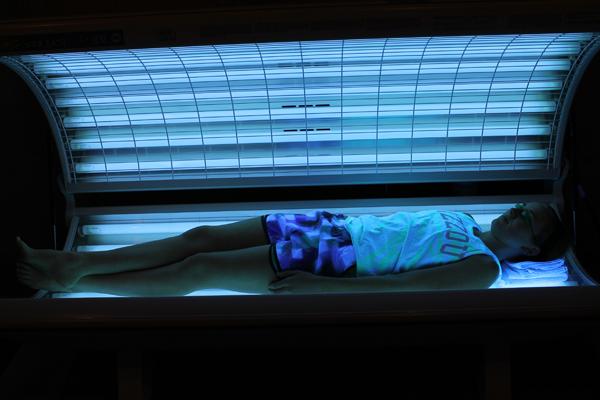
As the temperature rises and spring comes upon us, that only means one thing; spring break is near. With the impending spring break season coming up many young men and women look to tanning beds and artificial tanning to spruce up for the beach time rays. Weeks before spring break people rush to tanning salons hoping to hide their sun deprived skin. Though this may sound typical and harmless, research suggests that even minimal amounts of tanning can be harmful and lead to Melanoma, a form of skin cancer.
“I usually just tan before spring break so I don’t get burnt the first couple days on spring break,” senior Hannah Dougherty said, “but I think there are side effects because its such a high amount of radiation in a short period of time.”
Although there are benefits to being out in the sun such as getting vitamin D, most dermatologists say that it depends on the person and the dosage they are getting each time they step out into the sun. As for exposure, the “dose” and its timing are crucial. Several studies have suggested that suddenly getting a lot of sun is more dangerous than steady exposure over time according to Harvard Medical School Family Health Guide.
“It’s usually just the combination of many different things such as using tanning beds and getting a lot of sun exposure plus not wearing adequate amounts of sun protectant,” Dana Ward, University of Missouri dermatologist said, “It really is just all these things, tanning beds just promote more exposure to harmful ultraviolet rays which can in turn, produce Melanoma.”
Tanning beds can also cause more than just cancer, they can also lead to premature wrinkling and rashes as well as dry, rough skin. In addition to that it can also easily cause burns to the corneas, retinal damage and cataracts if proper eye protection isn’t worn.
However, some say that tanning, within proper moderation, is healthy and promotes a healthy lifestyle saying it relaxes you and produces vitamin D which your body needs.
“We obviously promote indoor tanning,” Whitney Meyer, manager at Tan Company said. “We do not suggest a recommended dosage, but we do want to encourage people to wear proper tanning lotion and skin protectants in order to make indoor tanning safe.
Tanning salons usually suggest proper amounts of time for each individual to be in a specific bed. Someone who usually never tans is recommended to tan for shorter amount of time as opposed to people who have tanned throughout the year. They also advise to buy quality tanning lotion compared to generic store brands and encourage the use of sunscreen if you feel necessary.
Although it might have sounded like nagging when mothers were constantly nag about lathering on the sunscreen on family vacations, the skin will definitely need that SPF 50. Whether one uses indoor tanning or not it is important to know if Melanoma runs in the family. A person can be more prone to having skin cancer if people in the family have or have had a form of skin cancer. Regardless of the type of skin, every time skin is exposed to UV rays, there is dangerous exposure to carcinogens.
By Carleigh Thrower













































































